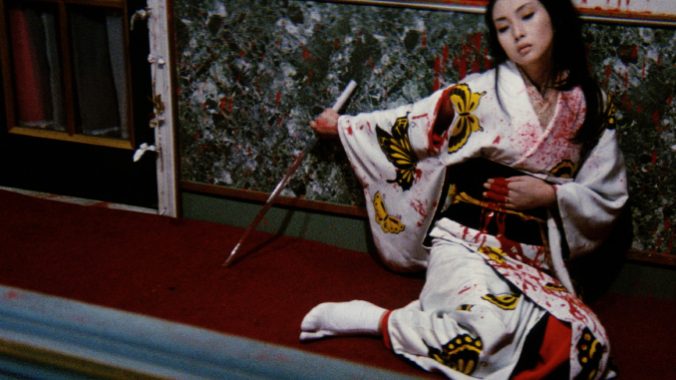Lady Snowblood Is Still a Demon at 50
One of the inspirations for Kill Bill was another triumph from a legendary Japanese comic artist

When Kazuo Koike died in 2019, the world lost one of the most important writers of manga in the history of the medium. The man who created the Lone Wolf and Cub and Lady Snowblood series is responsible for almost as vast a stretch of our imaginations as Akira Kurosawa when it comes to the samurai period piece. His heroes have been informed by and have in turn informed archetypes like the wandering loner, the hyper-competent slayer of bad guys, the vagabond hero, the singularly obsessed revenant. So many creators, from the East and the West, have been inspired by the juxtaposition between Ogami Itto’s cold-blooded murder-for-hire and his tender love for his son Daigoro—we wouldn’t have The Mandalorian without it, for just one recent example.
There’s more that united Itto and Lady Snowblood AKA Shurayuki-hime than just their unique premises and ability to dismember anyone foolhardy enough to stand in their way. (“Shurayuki-hime,” the character’s Japanese moniker and the Japanese title of the work, translates more accurately to “Princess Snow Demon,” a play on “Shirayuki,” which is the Japanese name for the character Snow White). At the beginning of Lone Wolf and Cub, Itto coldly informs his son that as they embark upon their quest for revenge, they are now apart from humanity—they are demons on a path to hell. That same sentiment is echoed in Lady Snowblood as the young girl Yuki’s trainer tells her that she is not a human, but shura, a term in Japanese that can be translated as a slaughter or carnage, or as akin to the demonic Buddhist asuras. The rules of humanity don’t apply to her, and they will not constrain her as she dedicates her life to her enemies’ total ruin.
That’s the fascinating aspect underlying both characters: The plain assertion that you are watching people who have knowingly and willingly abandoned their humanity—those whom the abyss has already claimed, as Nietzsche would have it. Lady Snowblood is something other than human, and she is liable to do whatever it takes. On the 50th anniversary of the film adaptation’s U.S. release, Lady Snowblood remains a bit lesser known than Koike’s Lone Wolf and Cub characters, but it’s still a stylish, ruthless, near-flawless ballet of blood.
An inmate serving a life sentence in a women’s prison gives birth to a child and, before her premature death, entrusts her to a fellow inmate. The mother, convicted of stabbing a man to death, conceived this baby by seducing prison guards. This friend takes the daughter, Yuki, to the brutal priest Dokai, who trains her for one purpose: Her mother was put in prison for killing one of her four rapists, who also killed Yuki’s father and half-brother. Now, Yuki must walk the path of shura and put the other three in the ground.
Lady Snowblood is a truncation of the manga, following the adult Yuki (Meiko Kaji) as she performs hits and trades for information leading her to her real targets. With a sword hidden in her umbrella, Yuki turns killing into an art form. Even when her targets aren’t taken in by her immaculate beauty, they haven’t really got a chance. The movie follows her from brutal assassination to brutal assassination, even as her quest for revenge is threatened to be derailed by human sentiment—pity for the daughter of one of her father’s killers, who has become a pathetic gambling addict; blossoming romance toward a pulp writer interested in her tale of revenge.
But of course, Yuki isn’t going to let that mushy stuff stop her from ripping and tearing until it is done. Lady Snowblood features some righteous dismemberment.
-

-

-

-

-

-

-

-

-

-

-

-

-

-

-

-

-

-

-

-

-

-

-

-

-

-

-

-

-

-

-

-

-

-

-

-

-

-

-

-








































